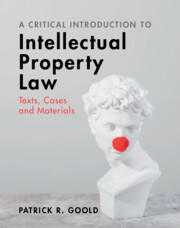580 results
Chapter 7 - Models of Care in Forensic Psychiatry
-
-
- Book:
- Seminars in Forensic Psychiatry
- Print publication:
- 13 June 2024, pp 176-207
-
- Chapter
- Export citation
Calibration and context in human evaluation of machine translation
-
- Journal:
- Natural Language Processing ,
- Published online by Cambridge University Press:
- 03 June 2024, pp. 1-25
-
- Article
-
- You have access
- Open access
- HTML
- Export citation
3 - Cultivating the Value of Democracy in History Teaching
-
-
- Book:
- The Discourse of History
- Published online:
- 16 May 2024
- Print publication:
- 23 May 2024, pp 45-72
-
- Chapter
- Export citation
Chapter 18 - Management of Major Depressive Disorder: Basic Principles
-
-
- Book:
- Clinical Textbook of Mood Disorders
- Published online:
- 16 May 2024
- Print publication:
- 23 May 2024, pp 178-192
-
- Chapter
- Export citation
Trash, Art, and the Comics
-
- Journal:
- Canadian Journal of Philosophy , FirstView
- Published online by Cambridge University Press:
- 20 May 2024, pp. 1-9
-
- Article
- Export citation
A methodological proposal for conlang evaluation
-
- Journal:
- Annual Review of Applied Linguistics , First View
- Published online by Cambridge University Press:
- 20 May 2024, pp. 1-7
-
- Article
- Export citation
Augmenting a Spanish clinical dataset for transformer-based linking of negations and their out-of-scope references
-
- Journal:
- Natural Language Processing ,
- Published online by Cambridge University Press:
- 17 May 2024, pp. 1-34
-
- Article
-
- You have access
- Open access
- HTML
- Export citation
A survey of context in neural machine translation and its evaluation
-
- Journal:
- Natural Language Processing ,
- Published online by Cambridge University Press:
- 17 May 2024, pp. 1-31
-
- Article
-
- You have access
- Open access
- HTML
- Export citation

A Critical Introduction to Intellectual Property Law
- Texts, Cases and Materials
-
- Published online:
- 17 May 2024
- Print publication:
- 06 June 2024
-
- Textbook
- Export citation
Replication studies in engineering design – a feasibility study
-
- Journal:
- Proceedings of the Design Society / Volume 4 / May 2024
- Published online by Cambridge University Press:
- 16 May 2024, pp. 115-124
-
- Article
-
- You have access
- Open access
- Export citation
A novel heuristic approach to detect induced forming defects using point cloud scans
-
- Journal:
- Proceedings of the Design Society / Volume 4 / May 2024
- Published online by Cambridge University Press:
- 16 May 2024, pp. 723-734
-
- Article
-
- You have access
- Open access
- Export citation
Evaluation of the methodical framework for the management of uncertainty in the context of the integration of sensory functions
-
- Journal:
- Proceedings of the Design Society / Volume 4 / May 2024
- Published online by Cambridge University Press:
- 16 May 2024, pp. 835-844
-
- Article
-
- You have access
- Open access
- Export citation
Evaluating NMT using the non-inferiority principle
-
- Journal:
- Natural Language Processing ,
- Published online by Cambridge University Press:
- 10 May 2024, pp. 1-20
-
- Article
-
- You have access
- Open access
- HTML
- Export citation
A landscape assessment of CTSA evaluators and their work in the CTSA consortium, 2021 survey findings
-
- Journal:
- Journal of Clinical and Translational Science / Volume 8 / Issue 1 / 2024
- Published online by Cambridge University Press:
- 25 April 2024, e79
-
- Article
-
- You have access
- Open access
- HTML
- Export citation
Chapter 2 - Engaged Scholarship
- from Part I - Overview of Extension and the Social Sciences
-
-
- Book:
- Extension Education and the Social Sciences
- Published online:
- 28 March 2024
- Print publication:
- 04 April 2024, pp 15-39
-
- Chapter
- Export citation
Social determinants of health-based strategies to address vaccination disparities through a university-public health partnership
-
- Journal:
- Journal of Clinical and Translational Science / Volume 8 / Issue 1 / 2024
- Published online by Cambridge University Press:
- 01 April 2024, e66
-
- Article
-
- You have access
- Open access
- HTML
- Export citation
Evaluating guidelines as key components of conservation policies: a conceptual framework and a pilot application
-
- Journal:
- Environmental Conservation / Volume 51 / Issue 2 / June 2024
- Published online by Cambridge University Press:
- 01 March 2024, pp. 85-94
-
- Article
- Export citation
3 - Ethical Challenges in Suicide Research
-
- Book:
- Practical Ethics in Suicide
- Published online:
- 15 February 2024
- Print publication:
- 22 February 2024, pp 37-66
-
- Chapter
- Export citation
Chapter 2 - Why Are Trials and Systematic Reviews Necessary but Currently Insufficient to Inform Health Policy?
-
- Book:
- Realist Trials and Systematic Reviews
- Published online:
- 08 February 2024
- Print publication:
- 15 February 2024, pp 7-15
-
- Chapter
- Export citation
Chapter 6 - Testing Realist Theory through Trials or Other Evaluation Designs
-
- Book:
- Realist Trials and Systematic Reviews
- Published online:
- 08 February 2024
- Print publication:
- 15 February 2024, pp 51-65
-
- Chapter
- Export citation



